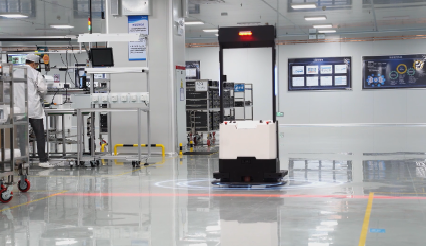
Choosing the right industrial mobile robot can significantly enhance your production efficiency and operational effectiveness. In this post, we will guide you through the key factors to consider when selecting an industrial mobile robot for your business needs.

The first step in choosing the right industrial mobile robot is to clearly define your application requirements. Determine the tasks the robot will perform, such as material handling, assembly, or inspection. Consider the working environment, load capacity, and required precision. This helps in narrowing down the options to robots specifically designed for your applications.
Different robots use various navigation technologies, such as AGV (Automated Guided Vehicles) or AMR (Autonomous Mobile Robots). AGVs follow fixed paths, while AMRs navigate dynamically. Evaluate which navigation technology suits your operational layout and flexibility needs. For complex and dynamic environments, AMRs might be the better choice due to their ability to navigate around obstacles and re-route in real-time.
Integration with existing systems is crucial for seamless operations. Ensure that the robot can be integrated with your current manufacturing execution systems (MES), warehouse management systems (WMS), and other automation solutions. Check for compatibility with IoT devices for enhanced data collection and operational insights.
Choose a robot that can grow with your business. Consider scalability in terms of adding more robots to your fleet or upgrading the existing ones. Flexibility is also essential – the robot should be adaptable to new tasks and changing operational requirements.

Safety is paramount in any industrial setting. Look for robots equipped with advanced safety features such as collision detection, emergency stop buttons, and safety sensors. Collaborative robots (cobots) are designed to work safely alongside human workers, making them a viable option for enhancing workforce productivity without compromising safety.
Reliable vendor support and service are critical for maintaining optimal robot performance. Evaluate the vendor’s reputation, service offerings, training programs, and response time. Good vendor support ensures minimal downtime and efficient troubleshooting.
While the initial cost of the robot is important, it’s essential to consider the total cost of ownership (TCO), including maintenance, operation, and potential downtime costs. Choose a robot that offers a balance between performance and cost-efficiency.

Choosing the right industrial mobile robot involves careful consideration of your specific needs, integration capabilities, safety features, and total cost of ownership. Making an informed decision can greatly enhance your operational efficiency and productivity.
Visit MRDVS to learn more about our robot camera and AI solutions and how we can help you enhance your industrial mobile robots’ performance.
©Copyright 2023 Zhejiang MRDVS Technology Co.,Ltd.
浙ICP备2023021387号-1